For three days, from 30 September to 2 October, Hall 3A of the NEC, in Birmingham, will be home to TCT Show + Personalize, an annual free-to-attend event dedicated to the 3D printing, additive manufacturing and product development sectors.
The big news for this year’s show is that over 40 additive manufacturing machine manufacturers will be in attendance flaunting their wares.
Alongside the industry giants (Renishaw, 3D Systems, Stratasys, EOS and ExOne) and familiar faces (Mcor Technologies, EnvisionTEC, Voxeljet, SLM Solutions, Arcam and Blueprinter) there will also be some relative newcomers including Prodways and Markforged.
On the desktop end of the machine manufacturer scale, Formlabs, Ultimaker and Beijing Tiertime will be demonstrating their offerings.
MakerBot will be in attendance too with its enigmatic CEO Bre Pettis joining Jenny Lawton, MarkerBot’s president, in the conference room on 1 October for a talk entitled ‘The Story, Philosophy and Future of MakerBot’.
Other speakers taking to the stage in the conference room over the three days include: Dr Jordon Brandt of Autodesk, who will be discussing the company’s recent entrance into the 3D printing hardware space; and Andy Christensen, 3D Systems’ vice-president of surgery and medical devices, who will be sharing his views on medical additive manufacturing hardware.
Alongside the exhibition and conference, TCT Show + Personalize will also include initiatives such as Bright Minds UK, the Startup Zone and the RepRap Hub, as well as a range of technology sessions catering for both newcomers and pros.
Of course DEVELOP3D will be there too. Come over to our stand and say hi!
The five key 3D printing processes
Filament-based systems
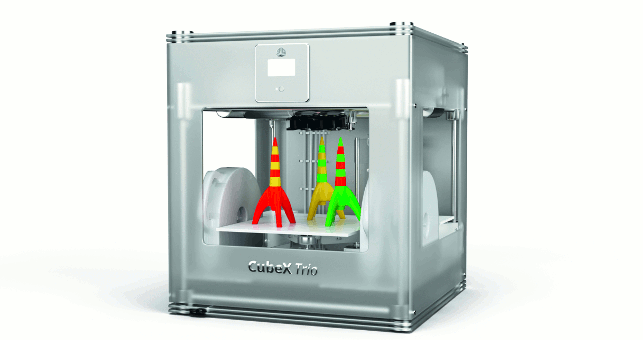
Quick facts
• Tough durable parts and prototypes
• Office-friendly
• Very low cost of entry
• Wide range of non-proprietary materials
• Low energy requirements
• Broad range of build sizes
• Highly competitive market
• Large build volume machines
• Growing sophistication at entry level
The key three
3D Systems CubeX
MakerBot Replicator (5th Gen)
MarkForged Mark One
The basics
Fused Deposition Modelling (FDM) or freeform layer modelling machines use a filament of plastic to build parts. They are arguably the most dynamic group in the 3D printing industry.
The options
There’s a huge range of FDM machines available to suit even the most cost conscious budget. While Stratasys’s machines offer the greatest level of automation, more recent entrants into the market are catching up.
The future
The FDM market is heaving with options, many of which are essentially the same machine in a diff erent package. The key diff erentiators, particularly for professionals, are automation, consistency and reliability.
UV curable resins & SLA
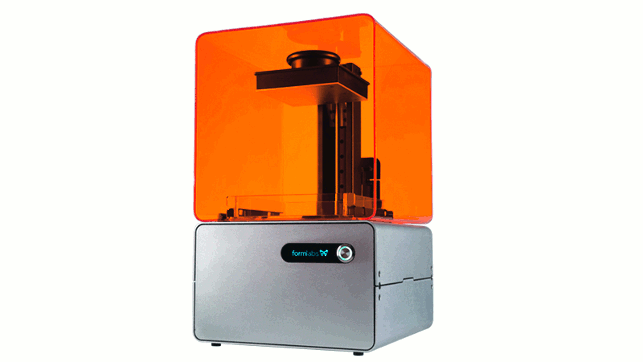
Quick facts
• Typically high resolution parts
• Low post processing requirements
• Massive array of materials
• Cost of entry is lowering
• Special purpose materials available
• Ultra fi ne layer size and resolution
• Competition is growing
• Extensive second user machine market
• Costs likely to drop in coming years
The key three
Formlabs Form 1+
DWS XFAB
Envisiontec Ultra 3SP HD
The basics
Stereolithography uses laser optics to solidify UV curable resin on a build platform and subsequent layers, typically in a vat of resin. There’s more on the way at the desktop with Roland’s new machine and Autodesk’s forthcoming machine.
The options
The materials options are broad and get into some very specialised areas — from optically clear parts and medical grade resins, to composites and into those suitable for casting or plating. Pretty much anything else you can imagine.
The future
With the gradual expiration of the patents surrounding stereolithography, we should see more action at the entry level that will bring high resolution, ultra detailed part builds to the desktop and design office.
Sintering for plastics
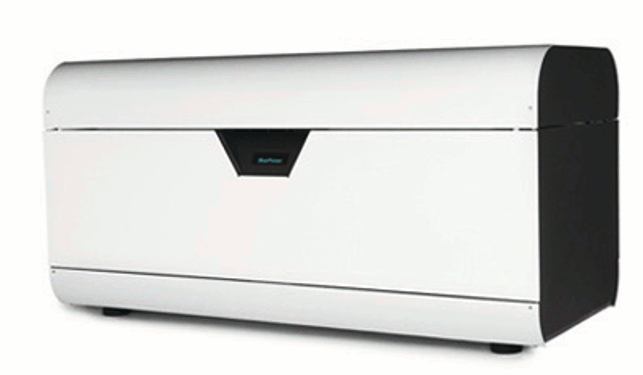
Quick facts
• Tough, resistant parts
• Advanced composite + filled materials
• UV resistant
• High materials costs
• Stackable build chambers
• Machine costs starting to drop
• Large build volumes
• Materials off erings growing
• Finishing & painting can be troublesome
The key three
BluePrinter
EOS Formiga P110
3D Systems sPro 60 SD
The basics
Sintering has its roots in the ceramics industry, where it is described as the process of creating objects from powders using heat to bind together, at the atomic level, just below the melting point of the material.
The options
There’s been huge growth in the adoption of sintering in recent years. More recent advances are seeing machine sizes grow and some interesting materials become available.
The future
Sintering is an inherently more complex exercise with issues surrounding the handling of powder, the heat required to sinter materials together and the reuse of excess material. That said, BluePrinter has shown there’s scope to do something new, rather than copy.
Printing with materials

Quick facts
• It’s metals not plastics
• Powdered metal is widely available
• Rich and established post processing
• Inert gas is often needed
• Tough resilient components
• Material costs fl uctuate with market
• New competition in market
• Low waste/scrap compared to NC
• Definitely one for the shopfloor
The key three
Mlab Cusing R
SLM 280HL
Renishaw AM250
The basics
Irrespective of the exact process for each varying machine, the principles are the same. A powdered metal is hit with a heat source (laser, electron beam, name your choice), brought to near melting point and fused together — layer by layer.
The options
While most powdered materials represent a fi re/explosion hazard, powdered printing metals, titanium in particular, are doubly so. As a result, you’ll need a three phase electricity supply to feed the lasers.
The future
Metal printing is one to watch, with the ability to create complex forms — lattice structures, conformal cooling channels in tooling or just plain unmachinable or uncastable shapes — from a wide variety of materials being key.
Alternatives and specials
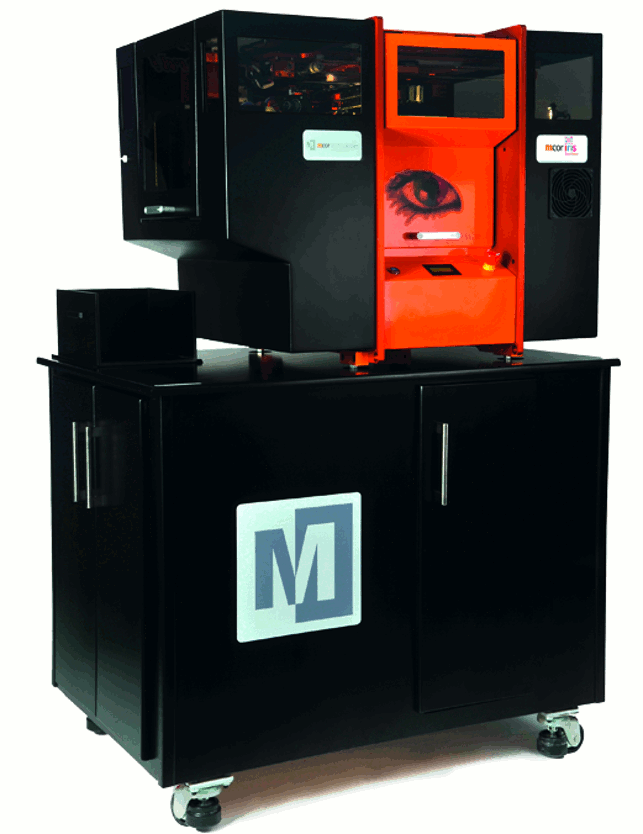
Quick facts
• Broad range of alternatives
• Ability to piggieback on other industries
• Growing range of specialisation
• Special purpose materials development
• Lower costs of entry
• Greater industry process support
• Novel approaches to part building
• Large build volume machines
• Growing acceptance of entry level
The key three
Mcor Technology Iris
3D Systems ProJet 1200
CeraFab 7500
The basics
In terms of technology there are many 3D printers that don’t fall into a specific category. Some are developed to support specific materials or industry practices whilst others offer an entirely different approach to producing parts or prototypes.
The options
Many mainstream technologies can be adapted to suit the needs of specific industries or processes. It’s worth spending time to find out what’s available, and TCT LIVE will be perfect for finding these.
The future
Specialisation is not new — look at how the hearing aid and dental industries took to both metal sintering and SLA. As the technology becomes more mainstream, investment grows and more organisations will look to provide new solutions.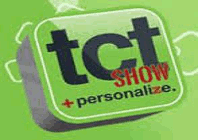
What to look out for at this additive manufacturing and 3D printing event
Default






